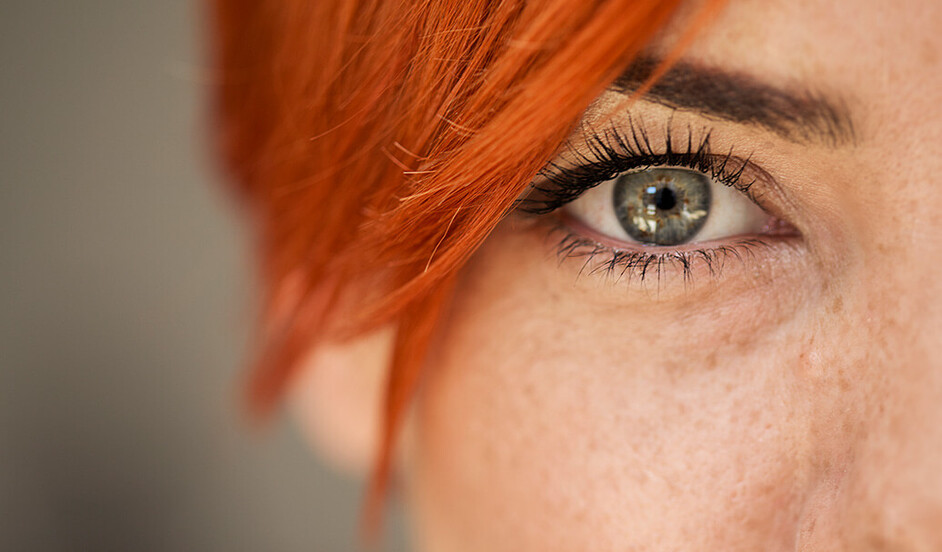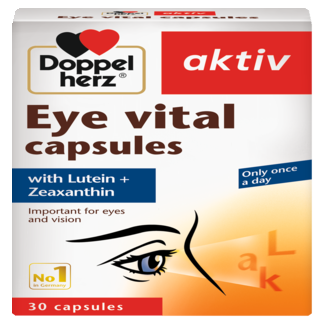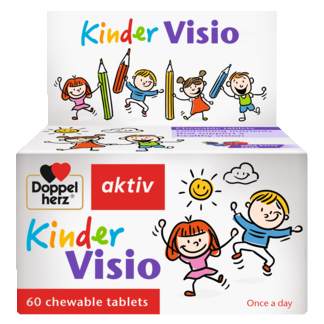Eye health

Products for healthy eyes







Eye health
Our eyes are not only the most beautiful sensory organ, but also the most sensitive. Protect and strengthen your visual faculties because good eyesight accounts for a major part of our quality of life.
Healthy nutrition for the eyes
Around the age of forty, the natural eyesight usually begins to abate,
but we can support our eyes with the right way of living. An "eye-conscientious" diet combined with cultivating simple practices, such as regular visits to an eye doctor, wearing sunglasses to protect the eyes from UV radiation, and abstaining from smoking are important basics for maintaining your vision and the health of your eyes.
But what is "eye-conscientious nutrition?"
The German Nutrition Society recommends eating 5 helpings of fruit and vegetables per day in order to cover our normal requirement of vitamins and trace elements.
This also benefits the metabolism of the eyes because we eat with our eyes first.
Various nutrients and protective substances aid in the development of good vision and in maintaining our eyesight into old age.
Nutrients and protective substances for the eyes:
| Vitamin A | Maintains normal eyesight |
|---|---|
| Vitamin C | Cell protection (free radicals) |
| Vitamin E | Cell protection (free radicals) |
| Lutein | Part of the macula |
| Zeaxanthin | Part of the macula |
| Zinc | Maintains normal eyesight |
| Selenium | Cell protection (free radicals) |
| DHA | Involved with eyesight and tear film |
Probably the best known nutrient associated with eye health is vitamin A.
Since vitamin A contributes to retaining the eyesight, it is usually considered "the eye vitamin."
Vitamin A - the eye vitamin
Good sources of vitamin A are, for instance, offal such as liver, fatty cheeses, herring, mackerel and eggs. Carrots are rich in beta-carotene, a precursor of vitamin A,
and are often considered THE food for good eyesight.
Certain strains on the eyes, such as working at a computer screen, watching television for a long time, being exposed to strong sun radiation or frequent night driving can increase the vitamin A requirement.
Lutein + zeaxanthin - components of the macula
We owe our sharp and high-contrast vision to the "yellow spot" (macula lutea),
a small area in the retina. The yellow color can be attributed to the increased existence of the plant pigments lutein and zeaxanthin. Since the sunlight enters the eye nearly unbroken in the area of the yellow spot, nature has devised an especially high antioxidant protection in the form of lutein and zeaxanthin.
The carotenoids lutein and zeaxanthin occur in vegetables, such as kale, asparagus, raw spinach and parsley.
Zinc, selenium + vitamins C + E – a shield for the eyes
Our eyes are exposed to oxidative stress owing to the repetitive action of light as well as the visual process itself. This may lead to an increased development of free radicals. In order to combat them, our cells possess a special protective shield: Vitamins C and E as well as the trace elements selenium and zinc contribute to protecting the cells from oxidative stress.
Citrus fruits, bell peppers or strawberries are known sources of vitamin C.
Vitamin E is contained mainly in vegetable oils. We take in selenium and zinc predominantly from animal-based foods, such as fish or meat. Our tip: Why not treat yourself to some oysters, as they are the food richest in zinc!
Omega-3 fatty acids DHA – component of the photoreceptors
An important element of eye health is docosahexaenoic acid, DHA,
a polyunsaturated omega-3 fatty acid. DHA is the fatty acid most represented in the brain and the photoreceptors. It is essential for the retinal structure and thus plays an important role for retaining normal eyesight.
In addition to the retina, the fatty tear film also contains DHA. A healthy tear film ensures that the tear fluid does not evaporate and the eyes stay well moistened.
Especially good sources for omega-3 fatty acids are cold water fish such as herring, mackerel and salmon.
Our eyesight is our most valuable sense organ – support it right from the beginning!